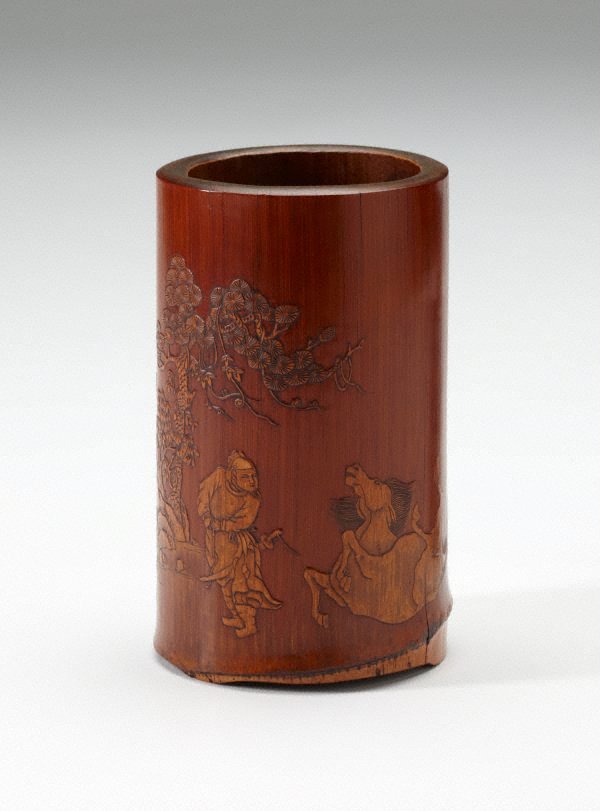-
Details
- Place where the work was made
-
China
- Date
- 19th century-20th century
- Media category
- Woodwork
- Materials used
- bamboo
- Dimensions
- 15.0 x 8.7 cm
- Credit
- Donated through the Australian Government's Cultural Gifts Program by John Yu in memory of George Soutter 2012
- Location
- South Building, lower level 1, Asian Lantern galleries
- Accession number
- 146.2012
- Copyright
- Share
-
-
About
This bamboo brush pot is decorated with a man with sword, a rolling horse and beard man in a boat and a poem, and simple landscape, both carved in low relief. The inscriptions of 'Gun Ma Tu' (Painting of rolling horse) indicate that the carver imitates a painting by Master Zhao Mengfu (1254-1322), a famous painter of horses. Although it bears the 'San Song' inscription, suggesting the carver’s name, it shouldn’t be confused with the work of a well-known bamboo carving artist Zhe Zhizheng (alias San Song) of the Ming dynasty. That distinction is so even though the carving technique on this object is also very skilful and fine.
Asian Art Department, AGNSW, June 2012
Bamboo Carving:
The earliest mention of a bamboo brush pot in literature appears during the Song dynasty (960-1127). Zhu Yizun of the Ming dynasty (1368-1644) wrote in his 'Bi Tong Ming' ('On Brush Pot'): “Brushes that lie on the desk randomly are like people who don’t have proper deportment. When they are put in a brush pot, like guests finding a home, they become proper.”Starting from the late Ming dynasty, the literati of the day stressed the cultivation of 'ya' (elegant, refined distinguished) style in their life. This style was expressed in their studies, carved bamboo ornaments, including brush pots ('bitong'), arm rests ('bige') and incense tubes ('xiangtong'). These were highly sought after because bamboo was considered as one of the four symbols for 'gentleman' whose integrity should be like the sections on bamboo trunks that go higher and higher.
The art of bamboo carving, probably started as early as the Tang dynasty, and became a unique art form. At its apogee in the early Qing dynasty (1644-1911), bamboo carving eclipsed all other similar forms of art and craft.
-
Places
Where the work was made
China
-
Exhibition history
Shown in 1 exhibition
Elemental, Art Gallery of New South Wales, Sydney, 30 Jul 2022–2024
-
Provenance
George Soutter and John Yu, pre Jun 2012, Sydney/New South Wales/Australia, donated to the Art Gallery of New South Wales, Sydney, June 2012.
